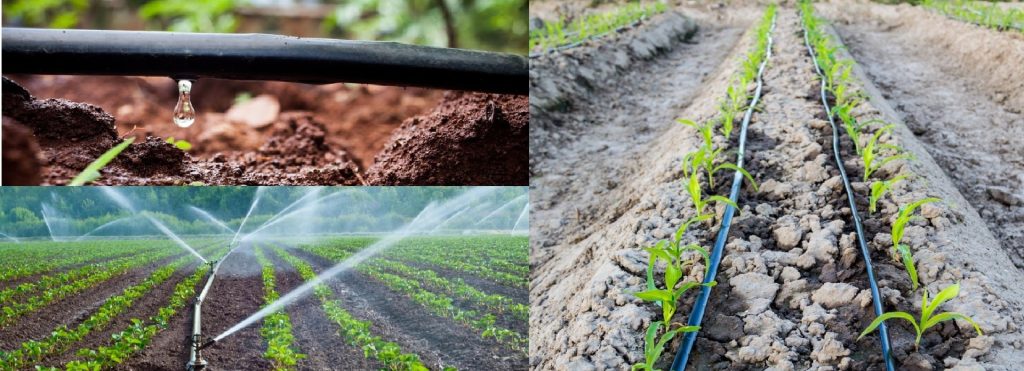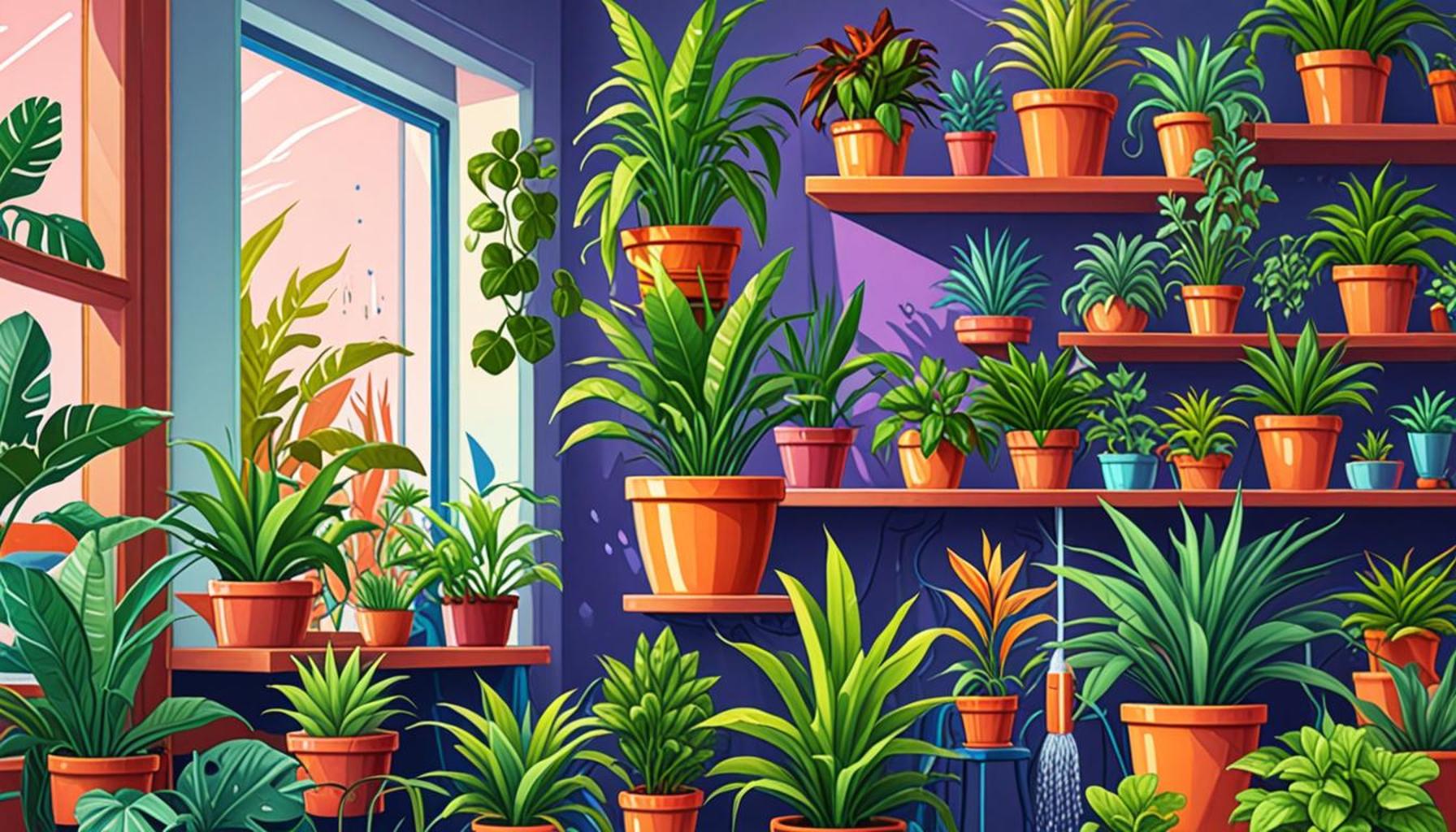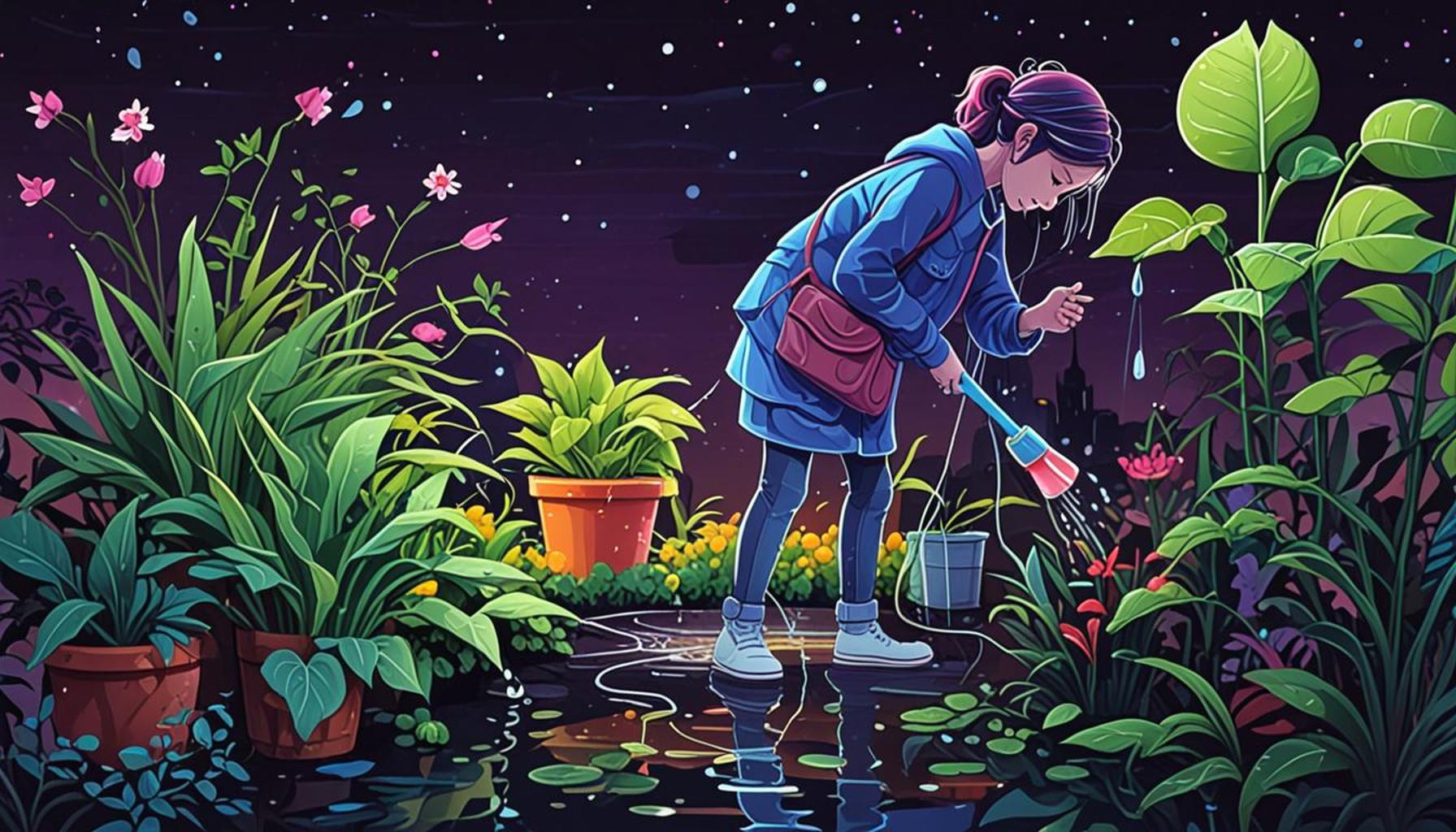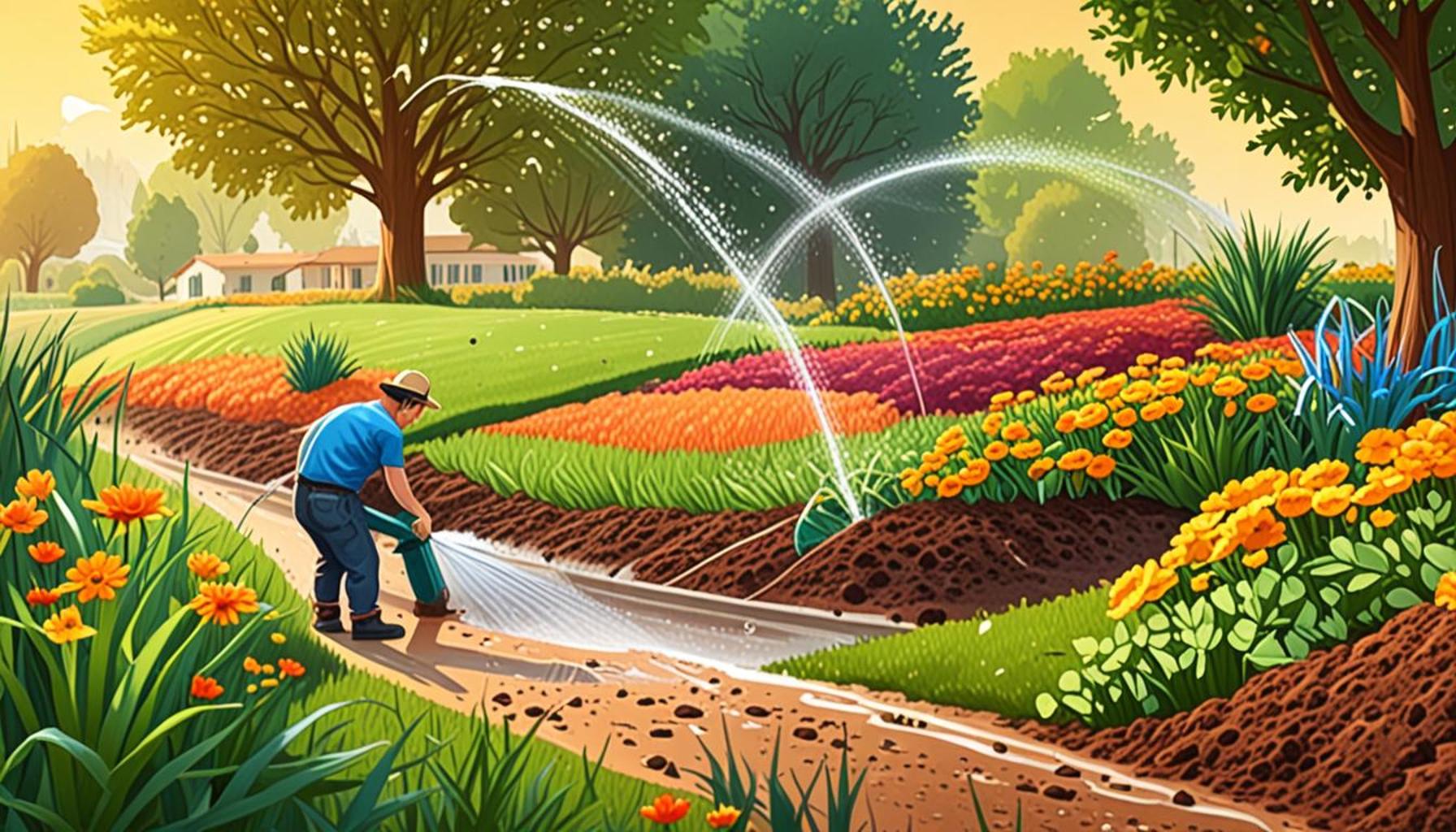The Importance of Proper Irrigation for Gardening Beginners

Essential Techniques for Successful Irrigation
For gardening beginners, mastering proper irrigation techniques is crucial for cultivating thriving plants. Effective watering not only promotes robust growth but also enhances the overall health of your garden ecosystem. A well-hydrated garden is more resilient against pests and diseases, while also showcasing vibrant colors and abundant blooms. Conversely, the absence of a thoughtful irrigation strategy can lead to the dire consequences of overwatering or underwatering—two pitfalls that may jeopardize your garden’s success.
The Benefits of Proper Irrigation
Implementing an effective irrigation system offers numerous advantages that extend beyond mere plant survival:
- Consistent moisture: A well-planned irrigation approach ensures that plants receive the steady water supply they require for optimal growth, alleviating stress during peak heat times and drought conditions.
- Resource efficiency: Efficient irrigation systems minimize water wastage, which not only conserves this precious resource but also helps reduce your utility bills. For example, utilizing rainwater harvesting systems can provide a sustainable watering source during dryer months.
- Improved soil health: Proper watering practices encourage the proliferation of beneficial microorganisms in the soil, which play a pivotal role in nutrient cycling and overall soil structure. Healthy soil can also help prevent erosion, making your garden more sustainable in the long run.
Understanding how to implement irrigation effectively can indeed set the foundation for a flourishing garden. Numerous methods exist, each tailored to suit different gardening styles and environmental needs:
- Drip irrigation: This method is especially beneficial for conserving water in small garden beds or vegetable patches, as it delivers water directly to the roots of plants, minimizing evaporation.
- Soaker hoses: Perfect for providing consistent and even moisture to rows of plants, these hoses can reduce the labor of manual watering while preserving water efficiency.
- Sprinkler systems: Ideal for larger gardens that require comprehensive coverage, modern sprinkler systems can be customizable with timers and sensors to adapt to changing weather conditions, ensuring your plants are never left thirsty.
Why It Matters
Many beginning gardeners often overlook the importance of irrigation, yet it is one of the most crucial aspects of successful gardening. A cleverly designed irrigation strategy can nurture a vibrant garden that continues to flourish season after season. Dive deeper into the world of irrigation techniques, and you’ll discover a treasure trove of methods and technologies available today. Researching topics such as soil moisture sensors or smart irrigation controllers can further enhance your understanding and application of these essential practices, ultimately transforming your gardening journey into an enriching and successful pursuit.
DISCOVER MORE: Click here for tips on creating healthy soil through composting

Understanding Irrigation Fundamentals
For those venturing into the realm of gardening, grasping the fundamentals of irrigation is vital for cultivating a garden that flourishes. Effective irrigation is not merely about turning on a hose or watering can; it’s about understanding the specific needs of your plants as well as the water requirements dictated by soil types, climate, and plant varieties. By developing a solid grasp of these principles, beginners can make informed decisions that will lead to sustainable gardening successes.
Determining Water Needs
Every plant has unique water needs based on its species, stage of growth, and environmental factors. The following guidelines can help you assess how much water your plants require:
- Soil Type: Sandy soils drain quickly and typically need more frequent watering, whereas clay soils retain moisture longer and may require less frequent irrigation.
- Plant Type: Drought-tolerant plants, such as succulents, demand significantly less water compared to lush annuals and vegetables, which thrive with more consistent moisture.
- Weather Conditions: Seasonal changes and regional climates can have a substantial impact. For instance, during hot summer months, plants may require supplementary watering, while spring showers could reduce the need for extra irrigation.
Signs of Underwatering and Overwatering
Recognizing the signs that indicate whether your plants are receiving too little or too much water is crucial for maintaining their health. Here’s what to look for:
- Underwatering: Plants may appear wilted, browning at the edges or dropping leaves. Dry soil that pulls away from the pot or garden bed is another telltale sign.
- Overwatering: Conversely, yellowing leaves, mold growth on soil surfaces, and root rot are indicative of excess moisture. A soggy soil texture can further contribute to these problems.
Getting the irrigation balance right not only aids in plant health but also fosters environmental stewardship. As the United States faces water scarcity issues in various regions, being mindful of how we water our gardens can contribute to greater conservation efforts. By implementing techniques that optimize water usage, such as the incorporation of native plants that require less irrigation or using mulch to reduce evaporation, gardeners can play a significant role in preserving this vital resource.
Exploring Advanced Irrigation Strategies
For those looking to elevate their gardening experience beyond the basics, incorporating technology into your irrigation methods can yield impressive results. Smart irrigation systems that use weather data and moisture sensors to automate watering can enhance efficiency and provide peace of mind. By exploring these advanced systems, novices can delve into a world of possibilities that align with modern agricultural practices, ultimately transforming how they care for their gardens.
The Importance of Proper Irrigation for Gardening Beginners
When embarking on the journey of gardening, understanding proper irrigation is crucial for success. It is not merely about watering plants; it involves intricacies that can significantly impact the health and yield of your garden.
| Irrigation Methods | Advantages |
|---|---|
| Drip Irrigation | Delivers water directly to the roots, conserving water and minimizing evaporation. |
| Soaker Hoses | Provides consistent moisture over a longer period, reducing the frequency of watering. |
Choosing the right irrigation method is fundamental for beginners as it affects not only plant growth but also resource efficiency. Drip irrigation, for instance, is highly efficient, allowing gardeners to use water wisely while ensuring their plants receive adequate moisture. On the other hand, soaker hoses work well in garden beds, providing a steady water supply across a larger area without soaked foliage, which can lead to disease. Understanding these systems can make an enormous difference in the overall health and productivity of your garden, encouraging thriving plants and bountiful harvests.
Moreover, beginners should assess their local climate, soil type, and plant requirements when planning irrigation. These factors determine not just what method to choose, but also how often and how much to water. Adequate research and planning can lead to a successful gardening experience.
DIVE DEEPER: Click here for more insights
Techniques to Optimize Water Usage
As gardening novices embark on their journey to nurturing healthy plants, understanding how to optimize water usage becomes critical. It’s important not only to water effectively but to do so in a way that is sustainable and beneficial for plant growth. Here are several techniques that can significantly enhance the efficiency of your watering routine.
Drip Irrigation Systems
One of the most efficient methods for delivering water to plants is through drip irrigation systems. This approach allows water to drip slowly directly to the roots of plants, which minimizes waste and conserves water. Beginners can find affordable, DIY drip irrigation kits or opt for a professionally installed system. The use of drip irrigation not only saves water but also reduces the chance of diseases associated with wet foliage, as it keeps moisture directed at the roots where it’s needed most.
Rainwater Harvesting
Incorporating a rainwater harvesting system into your gardening routine can be both cost-effective and environmentally responsible. By installing rain barrels to collect runoff from gutters during rainfall, gardeners can utilize this free resource to water their plants. Rainwater is often better for plants than municipal water due to its natural composition and lower chemical content. Adding a simple filtering system can ensure the collected water is free of debris and contaminants, making it a perfect solution for irrigation.
Timing Your Watering
Understanding when to water is just as essential as knowing how much to water. The best time to irrigate is in the early morning or late evening when temperatures are cooler and evaporation rates are lower. This practice not only conserves water but allows your plants to absorb moisture more effectively. Watering during the hottest part of the day can lead to excessive evaporation, leaving your plants thirsty and potentially impacting their health. By timing your watering sessions wisely, you can make the most of every drop.
Mulching: A Natural Water Retainer
Another effective technique to enhance irrigation efficiency involves the use of mulch. Applying a layer of organic mulch, such as bark chips, straw, or grass clippings, around your plants helps retain soil moisture, reduces evaporation, and suppresses weeds that can compete for water. Mulch not only creates a favorable environment for plant growth but also enriches the soil over time as it breaks down, providing additional nutrients. For beginners, incorporating mulch into your gardening strategy is an easy and impactful way to improve moisture retention in your garden beds.
Understanding Soil Moisture Sensors
For those interested in using technology to improve their irrigation practices, soil moisture sensors can provide valuable insights into the moisture levels in the ground. These devices measure the level of moisture in the soil and can be linked to automatic watering systems. This ensures that your plants receive the right amount of water only when necessary, minimizing the chances of overwatering and saving resources. For beginners, investing in moisture sensors is a practical step toward enhancing irrigation practices and can lead to more productive garden yields.
As gardening beginners explore these techniques and tools, they open doors to more effective and sustainable watering practices. Each technique not only contributes to plant health but also instills a greater sense of stewardship for water resources, fostering a deeper appreciation for the environment.
DIVE DEEPER: Click here to learn about effective pest prevention
Conclusion
In conclusion, proper irrigation is a fundamental pillar for gardening beginners aiming to cultivate thriving plants. The understanding of various irrigation techniques—such as drip systems, rainwater harvesting, and soil moisture sensors—not only boosts plant health but also promotes a sustainable relationship with water resources. As novices learn to optimize their watering routines, they become attuned to the environmental impact of their choices and their role in responsible water usage.
Utilizing strategies like timing your watering and incorporating mulch enhances moisture retention and minimizes waste. These practices are not just practical; they also offer beginners an engaging entry point into the world of gardening—where every drop counts and every decision impacts the landscape. Moreover, these foundational irrigation techniques empower new gardeners to foster lush gardens while respecting ecological necessities.
As you embark on your gardening journey, take the time to explore and implement these irrigation methods. By embracing responsible practices, you can ensure that your plants not only survive but flourish. The journey of a gardener is a blend of art and science, and mastering the intricacies of irrigation can yield beautiful results, both in your garden and in your growing appreciation for the natural world. So, dig in, get your hands dirty, and enjoy the fruitful rewards of a well-watered garden!



